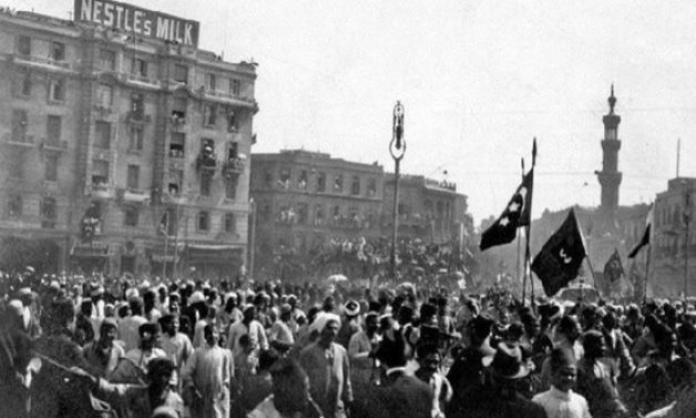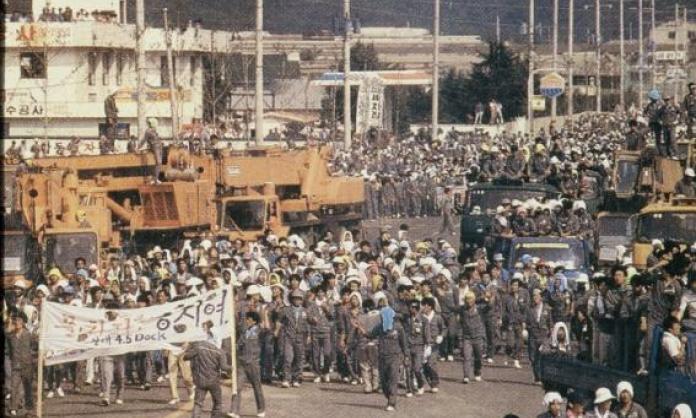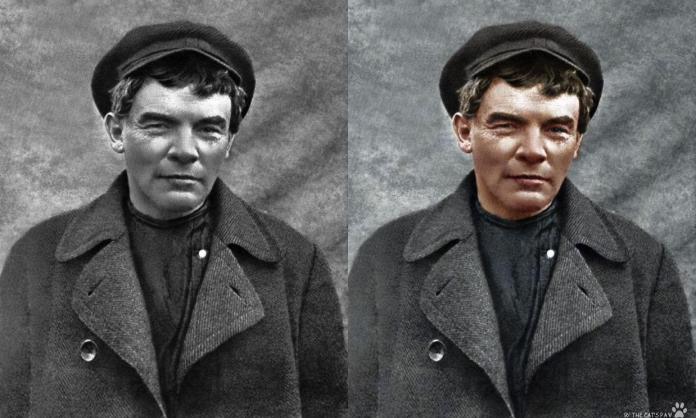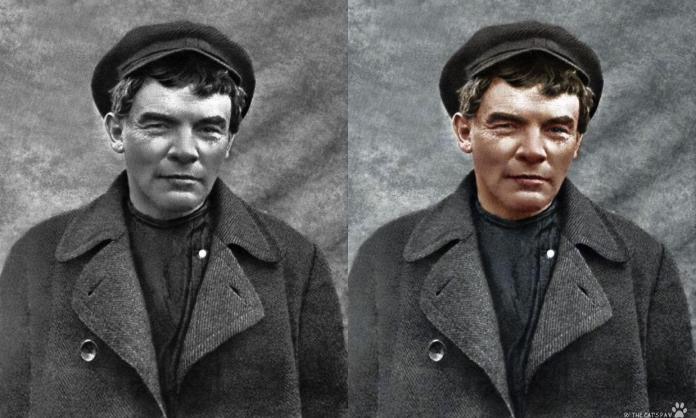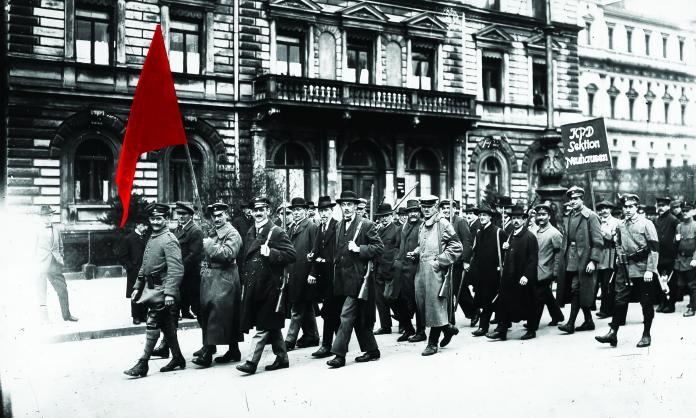The anniversary of the Russian Revolution—25 October 1917—is a day of commemoration for socialists. The revolution remains the only time workers have overthrown the ruling order and, in so doing, opened up the possibility of socialism. It represented everything the world’s ruling classes fear and despise, and they unleashed horrific barbarity in response. So at the same time as celebrating the revolution, we must never forget what was done to crush the spirit of rebellion.
There are those who pontificate that if the Bolsheviks had only been more reasonable, the civil war that raged in the aftermath of the revolution, between 1918 and 1921, could have been avoided. Many condemn the Bolsheviks for the measures they took to defend the workers’ state. But the brutality of the Whites left them with little choice.
Victor Serge, a libertarian, joined the Bolsheviks after his arrival in Russia in January 1919. His insights—inspired by a passionate desire to counter the lies of the counter-revolution and to see the victory of the workers and peasants—combined with his superb prose make him a vivid chronicler.
In Year One of the Revolution, he documents the White armies’ atrocities, backed to the hilt by the supposedly civilised Western powers. The first massacre after the 25 October uprising occurred just four days later in Moscow, where workers were less prepared for insurrection than in Petrograd. Leaders of workers defending the Kremlin surrendered after White officers assured them that their men’s lives would be spared.
Dozens of men who had not even been involved in fighting were machine-gunned. One who escaped spoke of the pile of bodies riddled with bullets until the last screams were silent, and described: “The walls of the surrounding buildings are spattered with blood and bits of flesh”.
“This massacre is not an isolated act”, wrote Serge. “Let us remember these facts. They show the firm intention of the defenders of the [capitalist] Provisional Government to drown the workers’ revolution in blood. The White terror had begun.”
In Finland, the Whites gained the upper hand in April 1918. More than100,000 people were either killed or given long prison sentences, equivalent to at least a quarter of the entire working class. Women, children, anyone accused of being a Red was summarily shot. Even moderate socialist parliamentarians were executed.
These documented facts show that the White terror, as Serge put it, “precedes and is the cause of [the Red terror], which has no other purpose than to break the resistance of a minority. Hence the Red terror is far the less bloody”. Explaining why the Whites unleashed horrendous terror, Serge argued “[it] is in reality the result of a calculation ... The propertied classes are perfectly aware that they can only ensure their own domination in the aftermath of a social battle by inflicting on the working class a bloodbath savage enough to enfeeble it for tens of years afterwards. And since the class in question is far more numerous than the wealthy classes, the number of victims must be very great ... Up to this moment the Russian revolution had virtually everywhere displayed great leniency towards its enemies. It had not used terror”.
Serge was in Petrograd when it appeared that the Whites would conquer this centre of the revolution. His writings capture the terrible expectations of such a calamity. People knew of the terrible vengeance of this mortal enemy: anti-Semitic pogroms, torture and massacres of workers and peasants.
This changed the way workers approached war. On 10 June, Serge observed a regiment of barely trained workers, men and women all bearing arms, heading to the front, now at an outer suburb of the city. He wrote, “Men no longer go off to the front drunk, singing patriotic songs, with panic in their hearts and madness in their brains. That was all right for the other war [WW1], for the insane war. This one, where they understand why they are fighting, is a dirty job, nothing more, which they accept without weakness—but with sadness, because now it’s not a question of being soldiers but simply of being men”.
In the days before and after the second anniversary of the October revolution, Red Petrograd mobilised to repulse the advancing Whites. Serge does not paint the Bolsheviks, now named the Communist Party, as unblemished heroes. But his account, brought together in a collection entitled Endangered City published in October 1919, rebuts the idea of them perpetrated by their enemies as simply intent on dictatorial rule.
He defends the controls they imposed over everyday life, including rationing, forced labour and taking White officers’ families as hostages to protect prisoners taken by the Whites. His defence was that a fundamental issue was at stake: the need to defend the workers state as the harbinger of a future, humane society.
The alternative was to return to the old order, to which even the middle classes—which despised the Bolsheviks and hated the revolution—did not want. There simply was no middle ground. You either stood with the revolution and did what you had to in order to defend it, or you gave in and became a traitor.
Serge compares the forces of the counter-revolution, “convinced of the divine right of the rich”, with “the idealistic rebel, who may certainly be provoked into violence, but who cannot be made into the complacent executioner who is happy to be at the service of ‘order’”.
This difference explains why, in spite of their overwhelming material strength, the Whites could be repelled, because “the inner rivalries inherent in capitalist society” weakened their efforts. For example, their generals competed for accolades for conquering Red Petrograd. One, in his haste, failed to pause and destroy the railway lines, undermining his own side.
Resources and fighters reached the city relatively unimpeded in response to Trotsky’s appeal to the country. And crucially, the reactionaries were “facing the greatest material and moral force of the century: the interests of and the consciousness of a class to which the future belongs”.
He describes the absolute travesty which prevailed in an area under a government set up by the White generals, where, “liberated from the Bolsheviks, they applied the laws in force in wartime in occupied enemy countries”. According to a respected politician in the White camp, this “liberated” territory is “an orgy and it is virtually total ruin. Everywhere, it is the arbitrary rule of bandit leaders”. The army was profiteering in flour sales while people starved. And in several towns “they were executing in the streets people who were suspect of sympathising with the Reds; these were dying in their hundreds, tortured and then hanged”. The British government spent enormous sums to sustain this iniquity.
When Trotsky arrived in Petrograd in his famous train from which he had led the Red Army through hellish battles, he addressed the Soviet. He spelled out his strategy in cold, logical phrases. They would draw the White army into the city if necessary and fight them street by street, where working class communities could be and were mobilised.
Every working-class man and woman up to the age of 45 was conscripted. The despair which had begun to take hold receded. Barricades were built, trenches dug and tangled barbed wire rolled out by thousands of proletarian women and men. When ready, they took the offensive under Trotsky’s command. There was some talk of destroying the whole city rather than surrender it to the “scum”, the “eloquent” word used by a worker Serge discussed the matter with.
The Red City, the centre of the revolution, was saved without wholesale destruction.
Serge, a former anarchist, spelled out the indispensable role of the Communist Party as he now saw it: “The whole party has made an immense effort, supported by the entire working population ... This effort, and the social and moral causes responsible for it, explain everything. The party at this time is the only organisation capable of inspiring, channelling and directing the energies which have just triumphed ... The party is in a sense the nervous system of the class”.
The party was honest with its supporters, explaining the brutal reality the city faced, which justified what in other circumstances would be condemned as authoritarian. Traitors could not be tolerated if the revolution was to survive.
In contrast, Serge was scornful of the anarchist centre, which refused all discipline. Predictably, it became a magnet for White spies. The anarchists faced what Serge described as “the absurd dilemma of anarchism and reality”—they were horrified at the thought of becoming just like the Cheka (security police) if they imprisoned the spies, let alone shot them. But allowing them to continue to spy was unconscionable. Facing “the brutal necessity of scorning their own ... metaphysical principles”, they handed them over to the Cheka, knowing full well they would be shot.
The ultimate tragedy of the revolution would come later, when Joseph Stalin led a counter-revolution from within. Again, the West played a role in this return to class rule by maintaining a blockade that prevented aid reaching the many millions who were starving as well as materials to help rebuild Russia’s almost totally destroyed industrial capacity.
The devastation reduced the working class, the only social force that could keep the democratic structures of the soviets alive, to a fraction of its previous size. Stalin, a Bolshevik, built a vicious ruling bureaucracy to drag Russia out of this mayhem using brute force to impose extreme exploitation on the working class.
Paradoxically, this reversal of everything the Bolsheviks had fought for confirmed their central thesis, summed up by Lenin in January 1918: “The absolute truth is that, without a revolution in Germany, we will perish”.
As we commemorate the promise of October 1917, it is appropriate to celebrate the achievements of the working class in October 1919. Living under siege, hunger stalking their streets, the whole of the capitalist world backing the blood suckers of old imperial Russia and hundreds of thousands of their most class-conscious dead on the battlefields of the civil war, they nevertheless managed to save the revolution from certain destruction. In doing so, they provided Europe’s socialists time to overthrow their own rulers and join with them in building socialism.
The failure of reformist socialists across Europe to lead to victory the revolutions that did erupt left Russia disastrously isolated. Without the emergence of other workers states in more advanced countries, the necessary material and political support to enable workers’ power to survive and go forward to socialism was lacking. Let us stand with those to whom Victor Serge dedicated his Endangered City collection and emulate their philosophy of life: “in the century of the dollar and mustard gas, life is only worth living if it is devoted to the one great cause: that of the proletariat”.






